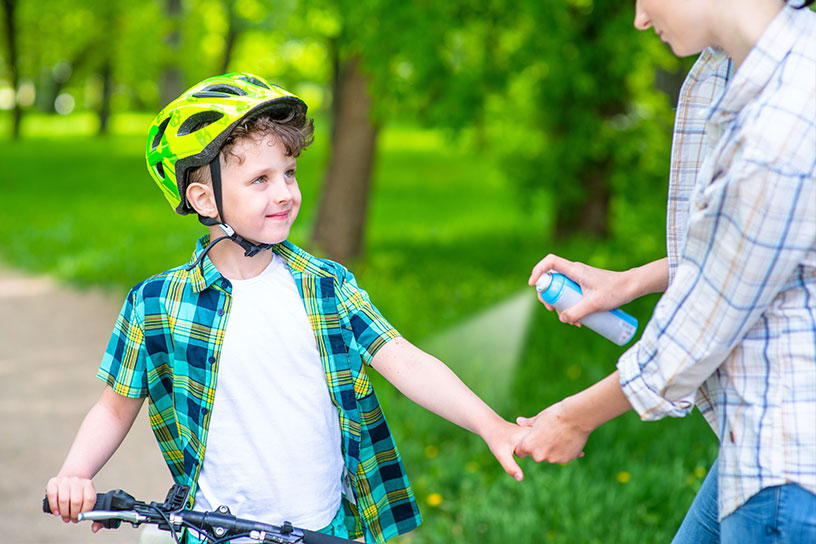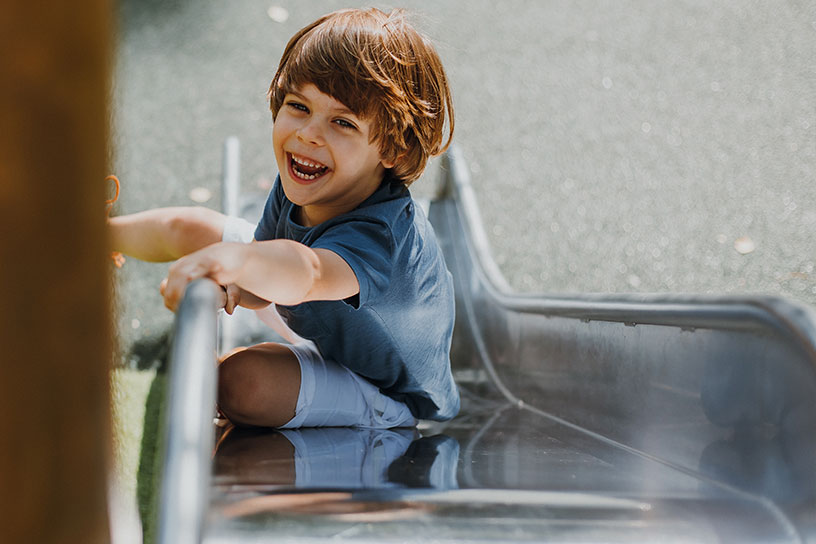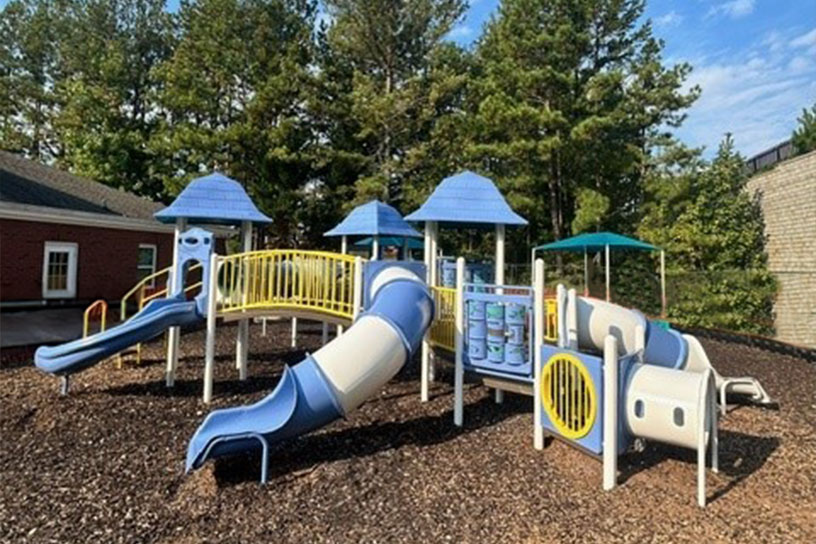Playground Surfaces
Most often, playground surfaces fall into two major categories of surfacing: loose-fill and unitary. Loose-fill material is commonly applied manually to establish a flat surface across the entire playground. Although loose-fill material boasts lower initial costs and easy installation, it necessitates more frequent maintenance to comply with safety and ADA guidelines. Examples of loose-fill materials include rubber mulch, engineered wood fiber (EWF), playground sand, pea gravel, and other bulk options.
Unitary surfaces encompass poured-in-place rubber, bond-in-place rubber, interlocking resilient tiles, and synthetic turf or grass with protective under-padding, all designed to enhance fall protection. Despite having a higher initial cost than loose-fill surfacing, unitary surfacing can be more cost-effective in the long term due to its exceptional durability and minimal maintenance expenses. Additionally, unitary surfacing ensures higher safety standards and ensures complete accessibility for visitors using mobility devices or wheelchairs. Poured-in-place and bond-in-place rubber surfacing offers a diverse range of colors and shapes, enhancing the visual appeal of playgrounds for both children and caregivers.
How to Inspect & Test Playground Surfaces
Now that you’re familiar with the two most common categories of playground surfaces, let’s dive into how to keep them safe which is often a neglected aspect of playground maintenance and inspections. The condition of the playground surface significantly affects safety and can impact the occurrence of injuries. It is crucial to ensure that play surfaces are well-maintained and have the appropriate depth, depending on the materials used.
Examining and Upkeeping Engineered Wood Fiber (EWF) as a Playground Surface
Engineered wood fiber (EWF) is an excellent surface covering for playground areas. It is cost-effective and easy to maintain over the long term. When inspecting EWF surfaces, it's essential to maintain the proper depth across the play area to minimize injuries from falls and children jumping off equipment like swing sets.
Exploring Loose Fill Options for Playgrounds
Loose fill options, such as wood or rubber, offer versatility in cost and durability over time. Proper inspection and maintenance are crucial to ensure the ongoing safety of these surfaces.
Evaluating Poured-in-Place Rubber Surfaces
Poured-in-place (PIP) rubber surfaces are visually appealing and durable but come at a higher cost. While highly durable, these surfaces may develop holes and trip hazards over time due to pitting and friction. Regular inspection and maintenance by a qualified professional are essential.
Considering Bonded Rubber Surfaces
An alternative to PIP rubber is bonded rubber surfaces, which are durable but require regular inspection. Over time, these surfaces may experience issues like pitting, cracking, or missing sections, emphasizing the importance of addressing problems promptly.
Impact Testing for Playground Surfaces
Certified Playground Safety Inspectors (CPSI) conduct impact testing on installed playground surfaces to assess their ability to handle impacts. This testing helps ensure the safety of children by preventing injuries resulting from falls or jumping off playground equipment.
Next Steps for Playground Surface Inspections
If you're unsure about the condition of your playground surface, the next step is to contact a certified playground surface tester. Playground Guardian offers inspection services by CPSI-certified inspectors. These inspections are tracked using the Park Protector playground inspection software for comprehensive record-keeping. If you prefer in-house inspections, Playground Guardian's CPSI-certified instructors can train your team.
If you have any questions, feel free to reach out to the Playground Guardian team for a consultation.





